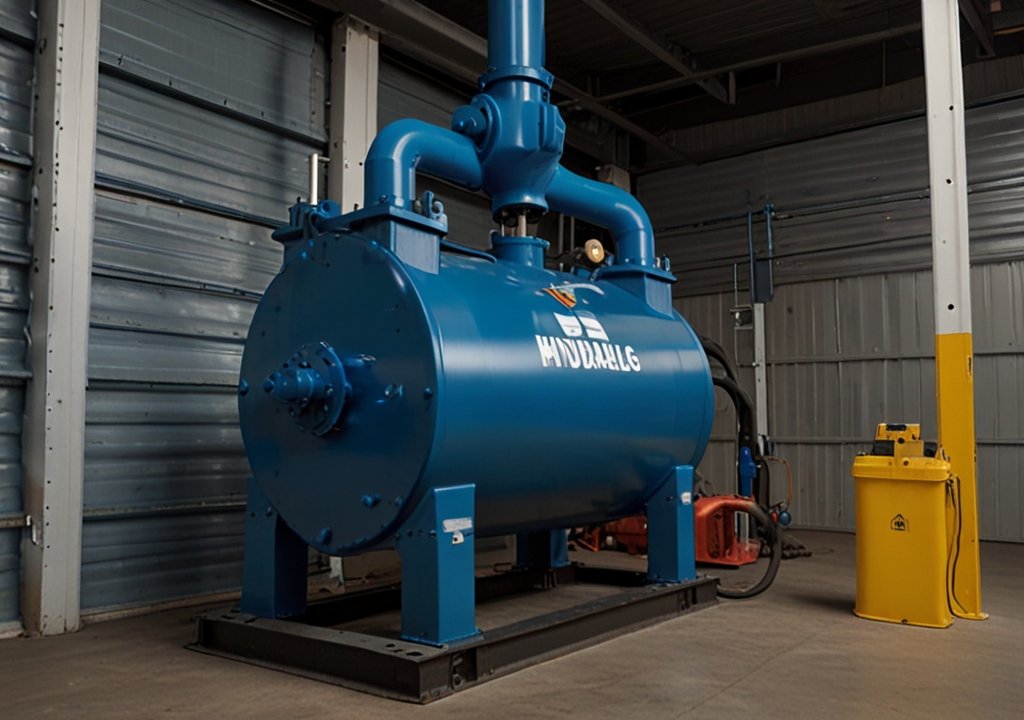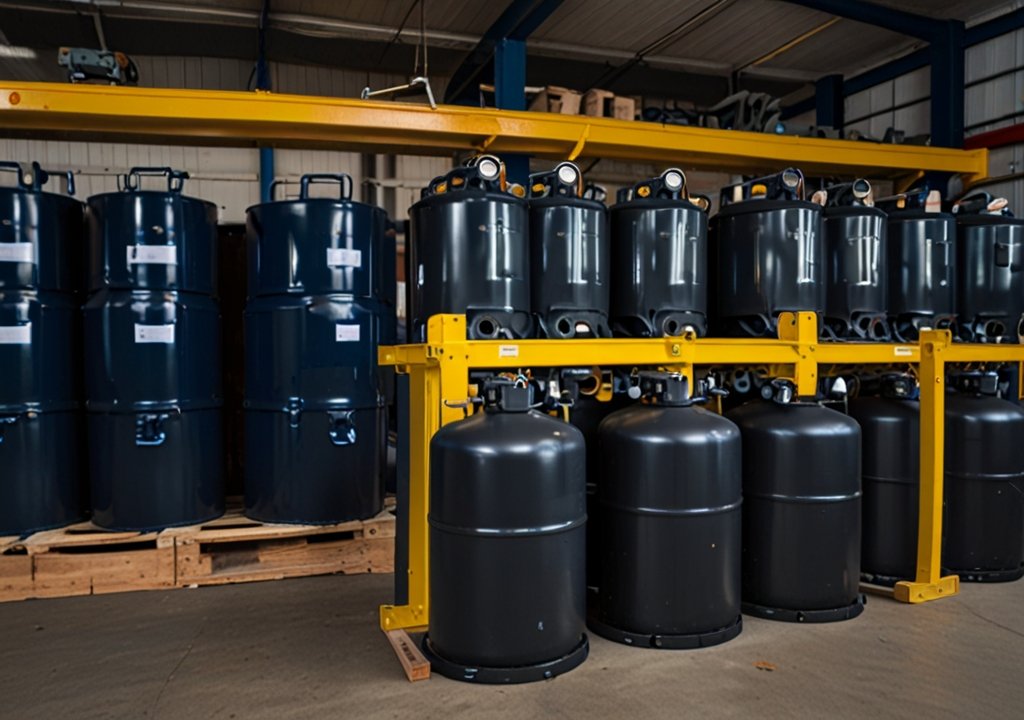Key Takeaways
- Proper storage of hydraulic oil in a cool, dry environment helps maintain its integrity and prevents premature degradation.
- Choosing the right container for hydraulic oil, such as metal drums or plastic jugs, ensures its quality and prevents contamination.
- Regular maintenance, inspections, and adherence to safety precautions can extend the life of hydraulic oil and improve equipment performance.
Understanding Hydraulic Oil Storage Basics
Hydraulic oil is the silent partner in countless industrial applications, from construction equipment to the everyday machinery that fuels manufacturing processes. This lubricant is not just a fluid; it’s the lifeline of hydraulic systems, ensuring everything operates smoothly and efficiently. Thus, maintaining its integrity is paramount. Proper storage of hydraulic oil plays a transformative role, safeguarding against premature degradation and equipment malfunctions. Whether you’re looking for reliable hydraulic oil Charlotte NC or elsewhere, it’s essential to prioritize appropriate storage techniques. A cornerstone of equipment maintenance, the right storage can mean the difference between operational longevity and costly repairs.
Choosing the Right Container
The choice of storage container for hydraulic oil is as critical as selecting the oil itself. Various options are available, such as metal drums, plastic jugs, and IBCs (Intermediate Bulk Containers), each catering to different needs. Metal drums, renowned for their sturdiness, shield the oil from physical and atmospheric threats. However, plastic containers provide a lightweight, corrosion-resistant alternative, allowing for easier handling and storage. When deciding, factors such as the container’s capacity, durability, and resistance to environmental conditions should be taken into account. An informed choice in the container will effectively prevent contamination and preserve the oil’s quality.
Environment Matters: Where to Store
The environment where hydraulic oil is stored is as crucial as the oil itself. Proper storage calls for a cool, dry place shielded from direct sunlight and moisture. The detrimental effects of UV rays and humidity can degrade the oil’s chemical properties, compromising its efficacy. Maintaining a stable temperature is also essential to avoid changes in viscosity. A fluctuation in temperature can precipitate oil breakdown, resulting in inefficient machinery operation. Ideal storage spaces are those equipped with insulation or climate control systems, which aid in maintaining the oil’s optimal state.
Temperature Control
Temperature control is a linchpin in the strategy for hydraulic oil storage. Extreme heat accelerates oxidation, while cold temperatures can thicken the oil, making it sluggish. This becomes evident in regions with drastic seasonal changes, where special attention to temperature regulation can avert costly equipment failures. Employing insulation in the storage area or positioning containers away from heat sources can aid in mitigating these risks. The stability of the oil’s chemical structure is crucial for sustained usability and performance.
Handling and Safety Precautions
Handling hydraulic oil with caution is non-negotiable for safety and efficiency. Employing personal protective equipment (PPE) such as gloves and goggles minimizes exposure and prevents chemical burns or irritations. Furthermore, maintaining clean, uncontaminated handling tools is essential to prevent foreign particles from entering the oil. Implementing rigorous safety protocols can prevent spills, which are hazardous and costly in terms of cleanup and regulatory fines. Adhering to these precautions ensures both the safety of personnel and the operational integrity of the oil.
Regular Maintenance and Inspection

Regular maintenance and inspection are vital components of effective hydraulic oil management. Conducting scheduled checks allows for the early detection of potential oil degradation or contamination. Symptoms like strange odors, discoloration, or sediment build-up are red flags that signify the need for further assessment. A well-structured maintenance regimen involving periodic oil analysis and filtration can extend the oil’s lifespan and enhance equipment performance. This proactive approach decreases the likelihood of sudden breakdowns, translating into improved productivity and lowered maintenance costs.
Disposing of Old or Contaminated Oil
Responsible disposal of hydraulic oil is an environmental and regulatory imperative. Once oil reaches the end of its lifecycle, disposing of it improperly can pose significant health and ecological risks. Leveraging licensed waste oil services ensures that disposal is both safe and compliant with environmental regulations. Familiarizing oneself with EPA guidelines on oil disposal provides comprehensive insights into sustainable practices. By adhering to these guidelines, businesses not only protect the environment but also portray themselves as responsible industry participants.
Advantages of Proper Hydraulic Oil Storage
The rewards of proper hydraulic oil storage extend far beyond immediate cost savings. By mitigating the risk of contamination and degradation, businesses can realize substantial long-term benefits, including reduced maintenance expenses and prolonged equipment longevity. Moreover, well-stored oil can lead to enhanced system efficiency, driving increased productivity and reduced downtime. In essence, investing the time and resources into optimal storage protocols is a strategic approach that yields financial and operational dividends.











